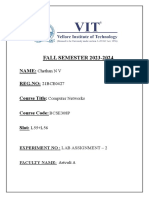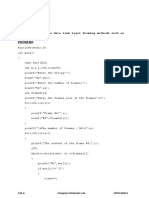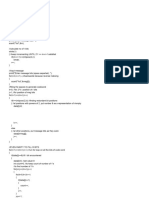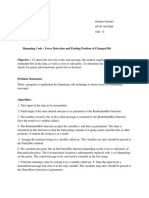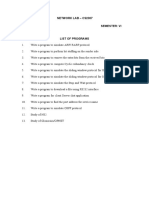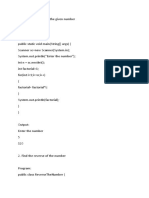0% found this document useful (0 votes)
13 views32 pagesComputer Networking Lab Experiments
The document outlines a series of computer networking lab experiments focused on various error detection and correction techniques, including Even Parity, Two-Dimensional Parity, Checksum, Hamming Code, Cyclic Redundancy Check (CRC), Stop-and-Wait Protocol, and Go-Back-N Protocol. Each experiment includes code implementations in C, demonstrating how to generate and check for errors in transmitted data. The outputs of each experiment illustrate the successful detection and correction of errors in simulated data transmissions.
Uploaded by
Soumya MohapatraCopyright
© © All Rights Reserved
We take content rights seriously. If you suspect this is your content, claim it here.
Available Formats
Download as DOCX, PDF, TXT or read online on Scribd
0% found this document useful (0 votes)
13 views32 pagesComputer Networking Lab Experiments
The document outlines a series of computer networking lab experiments focused on various error detection and correction techniques, including Even Parity, Two-Dimensional Parity, Checksum, Hamming Code, Cyclic Redundancy Check (CRC), Stop-and-Wait Protocol, and Go-Back-N Protocol. Each experiment includes code implementations in C, demonstrating how to generate and check for errors in transmitted data. The outputs of each experiment illustrate the successful detection and correction of errors in simulated data transmissions.
Uploaded by
Soumya MohapatraCopyright
© © All Rights Reserved
We take content rights seriously. If you suspect this is your content, claim it here.
Available Formats
Download as DOCX, PDF, TXT or read online on Scribd
/ 32














